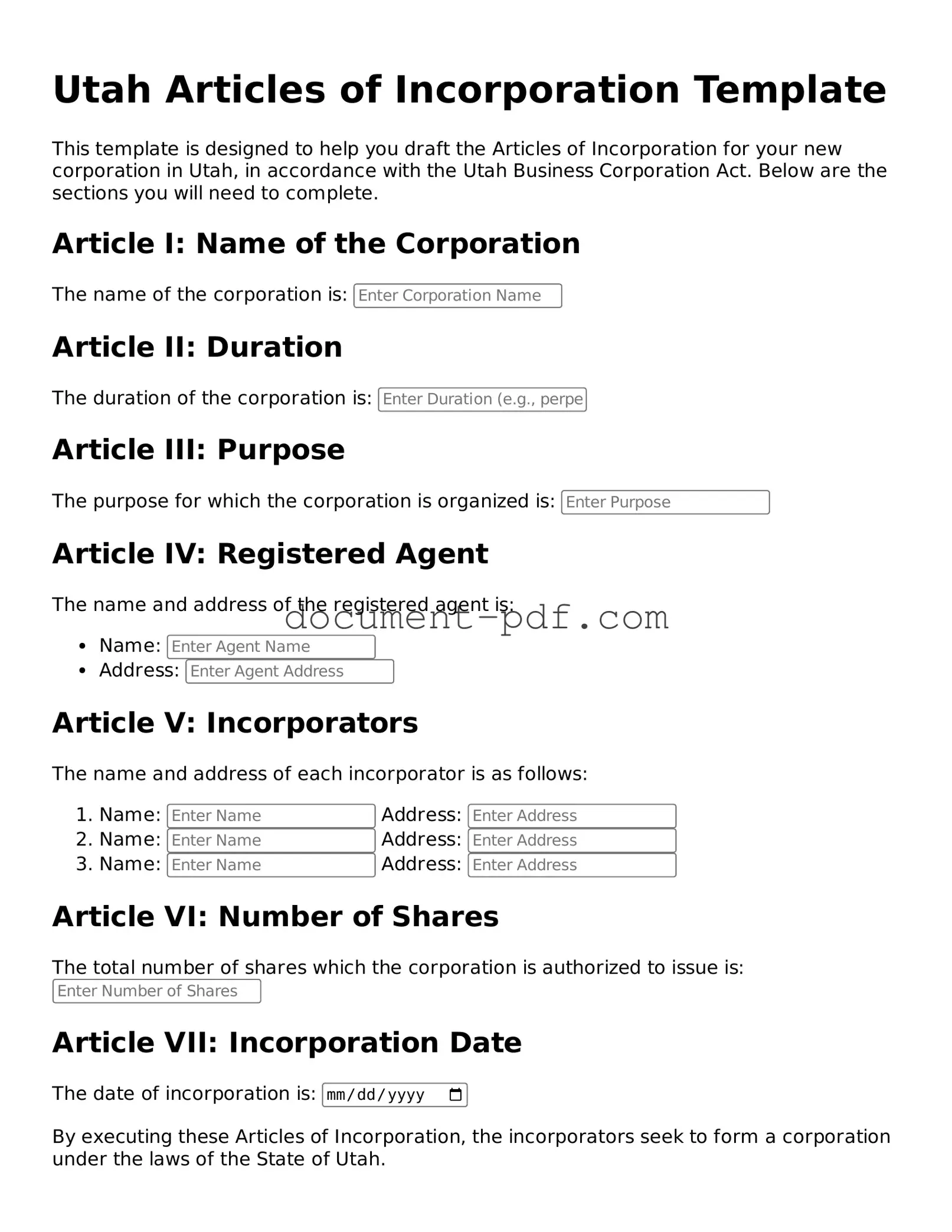Attorney-Verified Utah Articles of Incorporation Template
The Utah Articles of Incorporation form is a legal document required to establish a corporation in the state of Utah. This form outlines essential information about the corporation, including its name, purpose, and structure. Understanding how to properly fill out this form is crucial for anyone looking to start a business in Utah.
Ready to take the next step in forming your corporation? Click the button below to fill out the Utah Articles of Incorporation form.
Access Articles of Incorporation Editor Here
